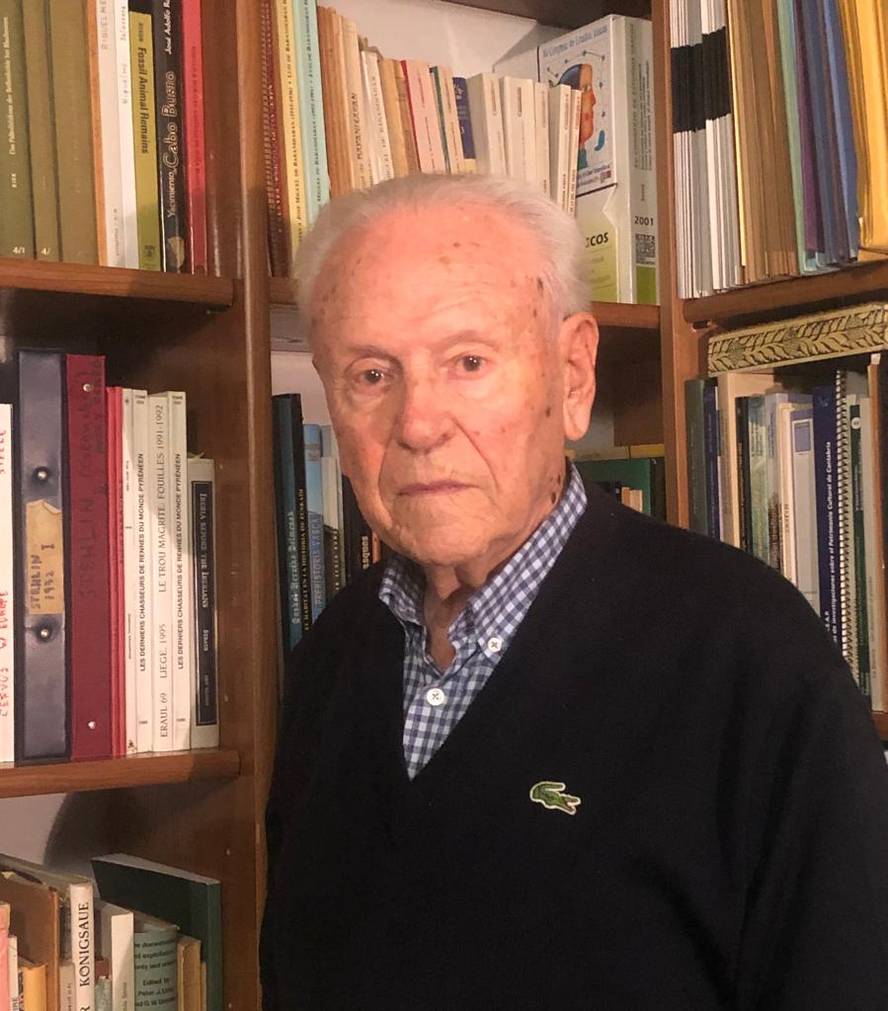“What we don’t know is what they imagined it for.”
Jesús Altuna was born in Etxabe Berastegi in 1932. He studied Philosophy and Theology at the seminars of Vitoria and San Sebastian, and Bachelor of Life Sciences from the Complutense University of Madrid. In the German research centers, he received knowledge of Paleoanthropology and Archaeozoology, and has performed a long career in these fields, in many cases as excavation director.
He has also been President of the Prehistory Department and Director of Munibe Journal of the Society of Aranzadi Sciences, as well as a member of various committees of international scientific journals. He is a retired professor at Basque University and a member of Jakiunde. It has received numerous awards, including the Ibáñez Martín Prize for Scientific Research, the Xabier María Munibe Prize, the Eusko Ikaskuntza Prize for Humanities and Social Sciences - Caja Laboral, the Mention of Good Work of the Basque Government and the Euskadi Prize for Research of 2004.
What has surprised, altered or surprised you most since you started working?
When he had been working in archaeology for four years, the Altxerri rock figures were discovered and Ekain's seven years later. I've spent many hours in the two caves. We know a lot about Paleolithic rock art, where, when and how they were painted. But what we don't know is that these were imagined for the tax.
And that's what interests us most. And in these cases, theories emerge. Because thorns fossilize, but not ideas. What did they go into painting in the remote depth of the caves for? Why did they paint in Ekain what they didn't hunt? And that is, deer and goats were the ones who hunted the most, not horses. But they knew them very well because they represented them perfectly. If we buy a box we make it visible. It doesn't hide under the piano. But they did, they put them under the piano. They lived at the entrance of the cave, where they had light; inside there is nothing of their day to day, only paintings. That surprised me and still surprises me a lot.
What would you like to witness about revolution or discovery?
As I have analyzed the past of human beings and I do not have a long future before me, I have to cite one of the most interesting of ancient times and discoveries. One of the most significant, and I liked to witness, was in Mesopotamia, about 10,000 years ago, when man domesticated the sheep, the goat and other species. The discovery of domestication is, together with agriculture, one of humanity’s greatest advances. Thanks to it, the pillar of the human economy underwent a fundamental transformation. Domestication revolutionized the way of life and the economy of communities, leaving an indelible mark on human history. Hunting, until then prevalent and necessary, became a secondary activity and later a sport. That is why it is called at that time, when man becomes a wild animal, “the Neolithic revolution.”






